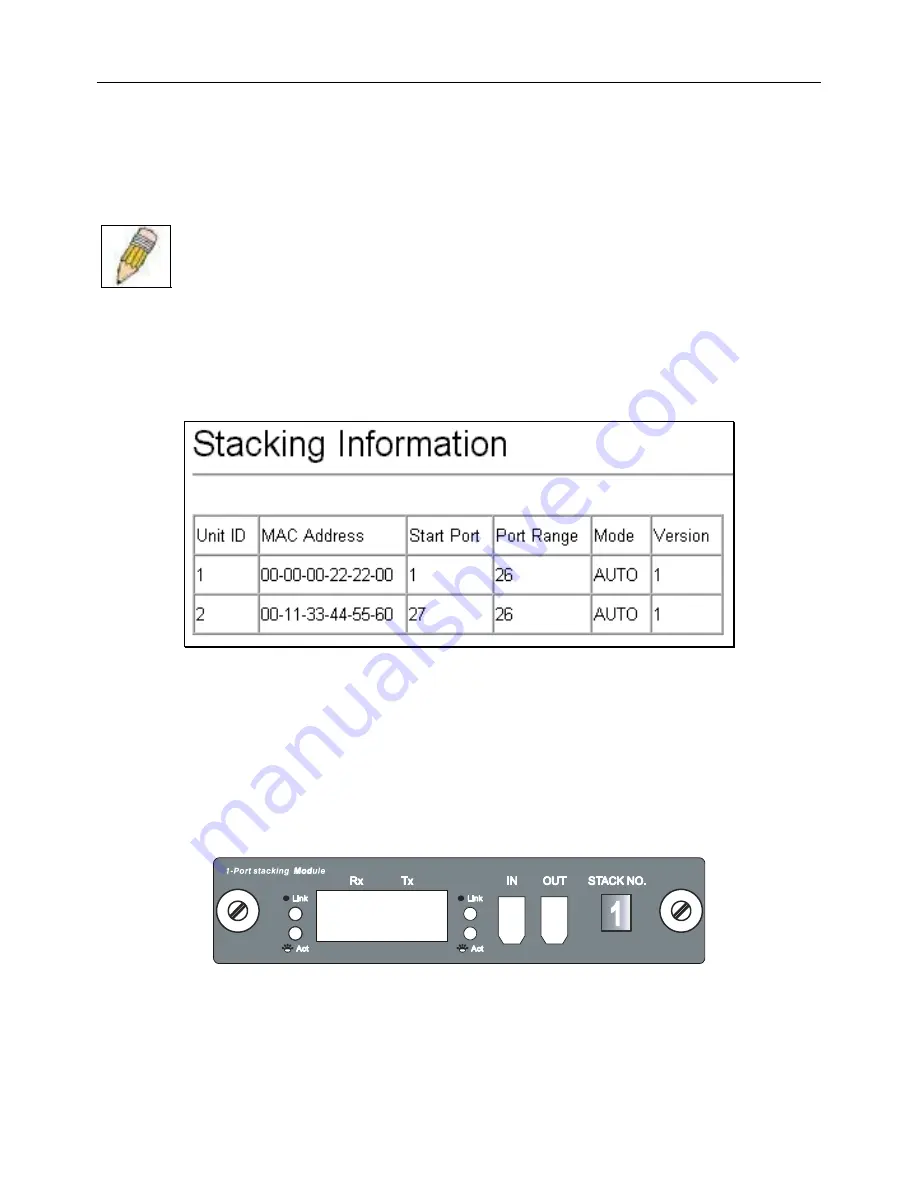
DES-3226S Layer 2 Fast Ethernet Switch User’s Guide
48
Stacking Information
When DES-3226S Switches are properly interconnected in a stacked group, information about the stack is displayed in the
Stack Information
menu. This link is visible only when a Switch stack has been connected and the optional stacking modules
are active.
NOTE:
Stacking mode is configured using the CLI command
config stacking mode
. The default
settings allow stacking with other DES-3226S Switches in a ring topology or with a DGS-3212SR or
DGS-3312SR Switch in a star topology.
The Switch stack (up to 8
−
total) is displayed in the upper right-hand corner of you web-browser. The icons are in the same
order as their respective Unit numbers.
To view the stacking information, click on the Stacking Information link from the Basic Setup folder:
Figure 6 - 10. Stacking Information
The
Unit ID
field displays the Switch’s order in the stack. The Switch with a Unit ID of 1 is the Master Switch.
The
MAC Address
field
displays the unique address of the Switch assigned by the factory.
The
Start Port
field displays the first port assigned to the corresponding Switch in the Switch stack.
The
Port Range
field displays the total number of ports on the Switch. Note that the stacking port is included in the total
count.
Mode
displays the method used to determine the stacking order of the Switches in the Switch stack.
The
Version
field displays the version number of the stacking firmware.
The Switch’s current order in the Switch stack is also displayed on the Stacking Module’s front panel
−
under the
STACK
NO.
heading:
Figure 6 - 11. The Stacking Module’s Front Panel
The
Stack No.
seven-segment LED displays the Unit number assigned to the Switch. A
0
(a
zero
) in the display indicates that
the stacking module is in the process of determining the stack status and has not yet resolved the Switch’s Unit number.
Summary of Contents for DES-3226S
Page 126: ......






























